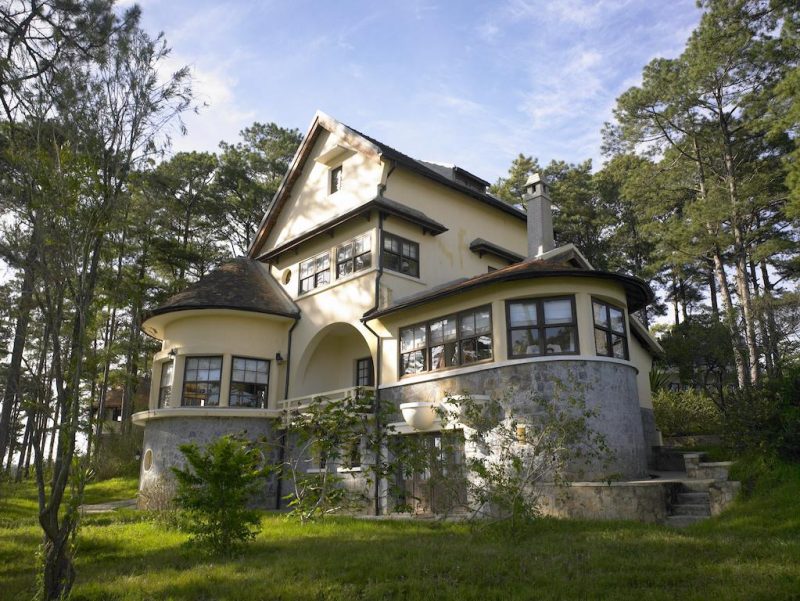#14963. Elegant country house with combined facade and bay window elements

This expressive country house demonstrates an interesting combination of classical and modern elements in its architectural appearance. The facade is executed in light beige tones with a characteristic plinth made of natural stone, which creates a visually solid foundation for the structure. The asymmetrical composition is particularly noteworthy, where rounded bay windows with panoramic glazing contrast with the clean lines of the main volume.
The two-story structure features non-standard roof geometry with a high slope and dormer window, adding vertical dynamics to the building. Windows of varied shapes and sizes are positioned according to the functional purpose of interior spaces, creating an interesting rhythm on the facade. The arched element of the central entrance brings elegance to the overall composition.
An important feature is the harmonious integration of the building into the natural landscape — the house seems to grow out of the surrounding pine forest, and the stonework of the lower part of the facade visually connects the architecture with the natural environment. When designing a facade for your own house, you can adopt this technique of combining textures: smooth plaster in the upper part and textured stone at the base create an interesting contrast and add solidity to the building.
Special attention should be paid to the well-thought-out terrace with stone railings and steps, which serves as a smooth transition between the house and the plot, blurring the boundary between architecture and nature. This project demonstrates how a modern country house can be both expressive and delicately integrated into the surrounding environment.